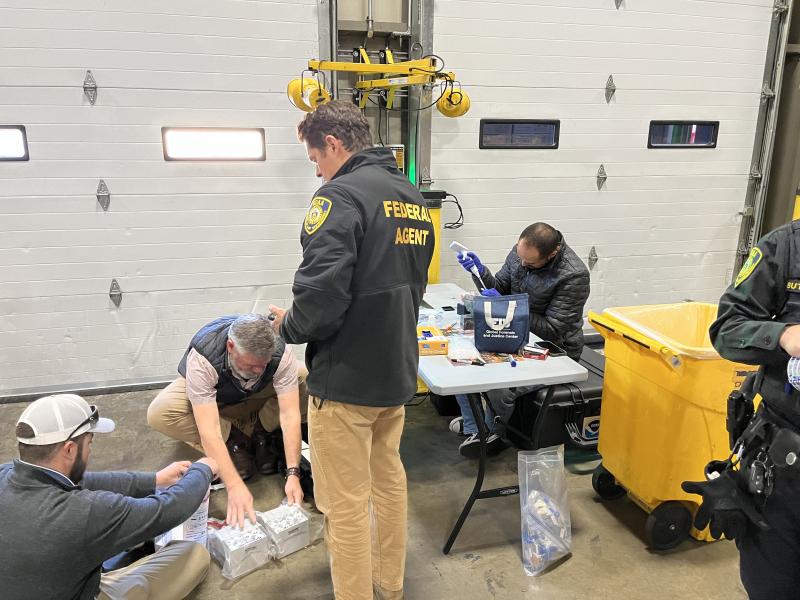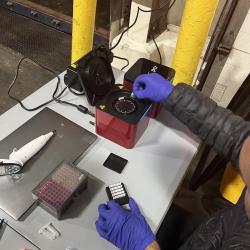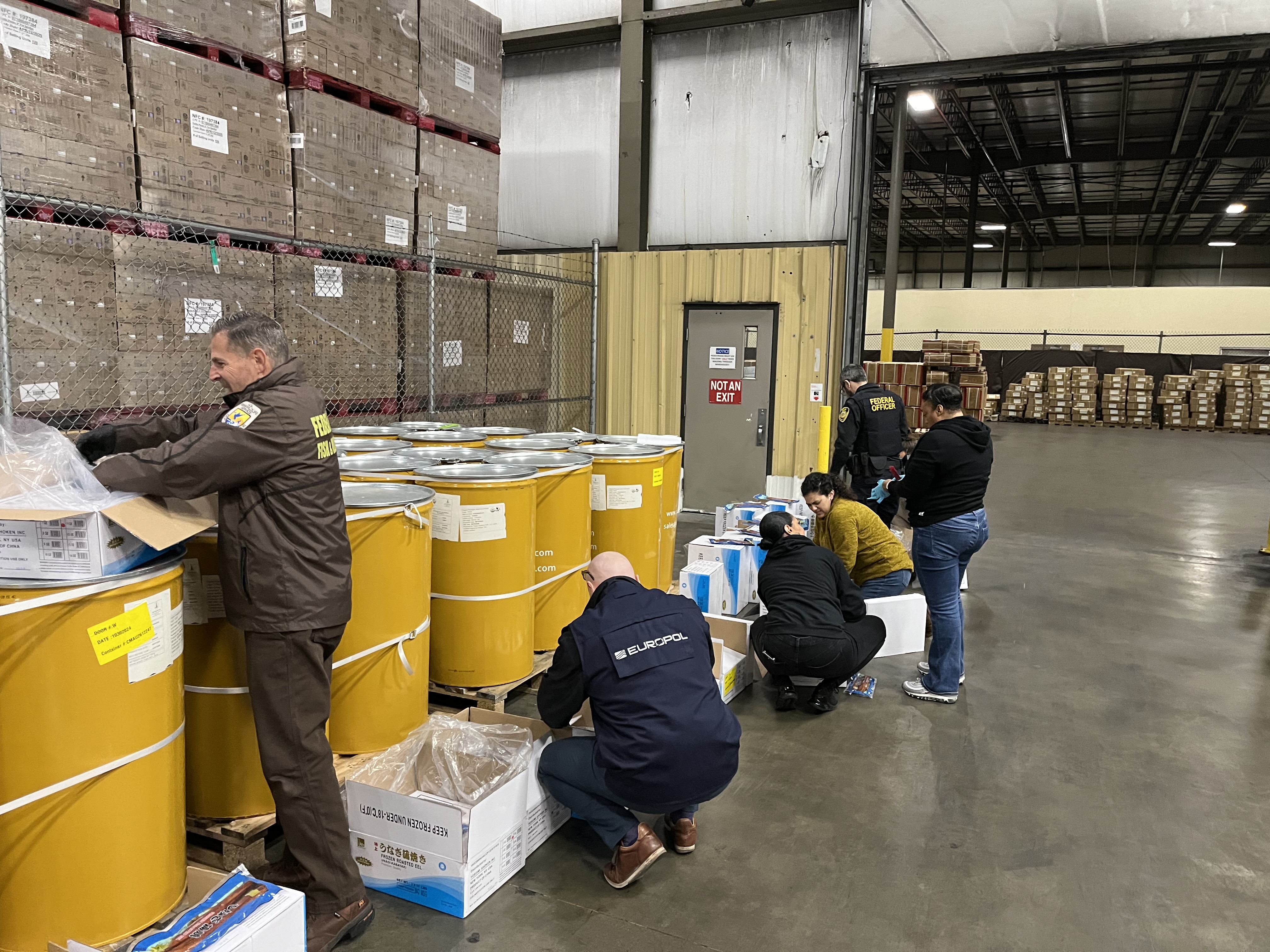NOAA Fisheries Office of Law Enforcement recently initiated its first pilot test of a new, rapid polymerase chain reaction (PCR) device. It will allow officers to quickly perform genetic analysis while in the field. Under U.S. law, it is illegal to falsely label a product being imported into the United States. During inspection at ports, it can be difficult to identify fish species through visual examination alone. Often, NOAA law enforcement staff must send genetic samples to forensics labs to verify the fish species. This can take weeks to process and slow seafood products moving through U.S. ports. This new technology can help enforcement personnel identify fish species, gather evidence, and investigate potential seafood fraud, keeping illegal seafood product from entering into the U.S. marketplace.
We worked with Florida International University to implement the use of this innovative tool, which was developed by their researchers. It will help us tackle illegal, unreported, and unregulated fishing. “The idea is to make this technology available to everyone so that it becomes routine to do genetic testing in the field,” said Diego Cardeñosa, Ph.D, lead researcher on the project. “Then it becomes a regular part of evidentiary support in law enforcement. This novel technology brings a lot of value to cases that law enforcement needs to handle.”
The device uses a PCR test, similar to those used to detect COVID-19. However, instead of detecting COVID-19, it uses unique genetic markers to detect various fish species. Once samples are added into the device, the genetic markers produce a specific chemical reaction depending on what fish species is being tested for. Currently, the device can detect more than 100 species, including tuna, shark, and eel, with additional genetic markers planned for future development. Generally, samples submitted to conventional labs can take weeks to process, but using this device, officers can get results within hours. The addition of this new technology will also reduce the amount of samples sent to NOAA forensics labs for testing.
Testing the Tool
NOAA Fisheries enforcement staff tested the device during a weeklong enforcement operation at the Port of Newark, New Jersey in November 2024. The operation focused on seafood fraud and trafficking of marine fishery products. We collected genetic samples from imported fish at the port and used the device to identify the fish species. With the tool, NOAA identified more than 27 tons of fish that were determined to be illegally harvested, prohibited in trade, and listed in the annexes of the Convention on the International Trade of Endangered Species.
NOAA enforcement staff intercepted more than 40 tons of trafficked fish from both Asia and South America.
We will use information gathered during the operation to further investigations that may lead to the prosecution of anyone who committed fraud or participated in the illegal trade of protected species.
“Ultimately, we want to facilitate sustainable, legal commerce, but at the same time interdict illegal trade,” said Bryan Landry, Assistant Special Agent in Charge in NOAA Fisheries Office of Law Enforcement. “This new technology will help us do that more efficiently.”
NOAA was joined and supported by:
- Customs and Border Protection
- Homeland Security Investigations
- Food and Drug Administration
- U.S. Fish and Wildlife Service
Additionally, forensic science experts from NOAA, U.S. Fish and Wildlife Service Forensic Unit, and Florida International University participated in the operation. An Enforcement Liaison from Europol shared operational intelligence with EU partners who were conducting concurrent operations in France, Spain and Portugal.
We plan to pilot the device in other major ports of entry in 2025.





